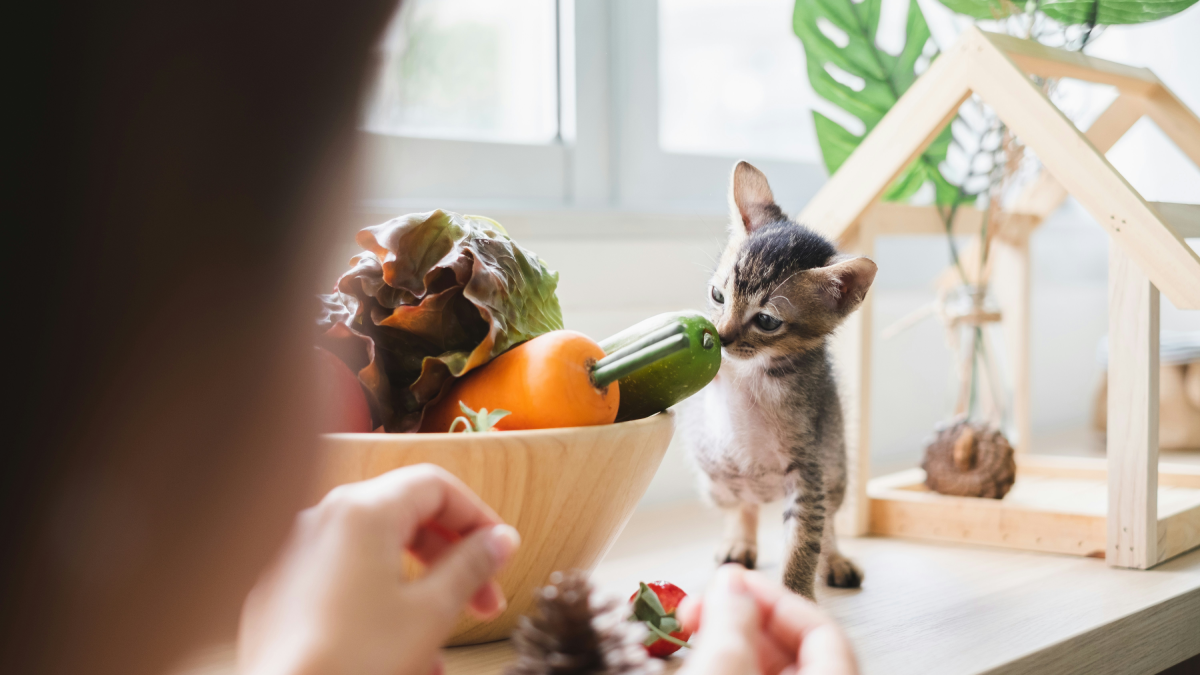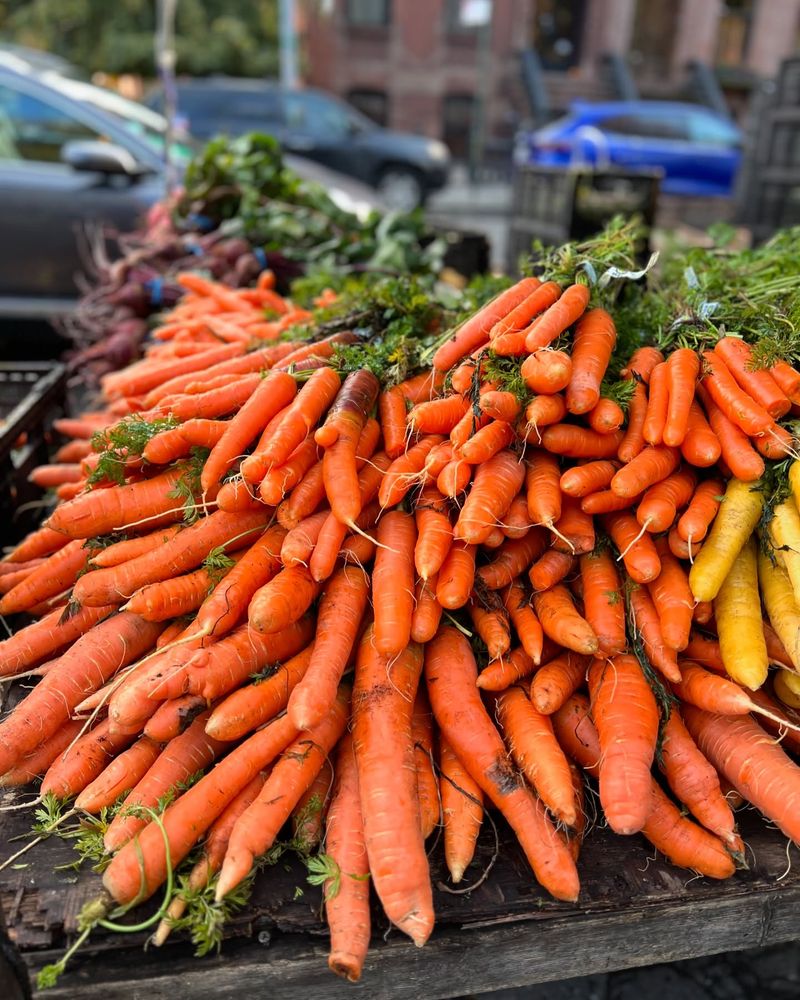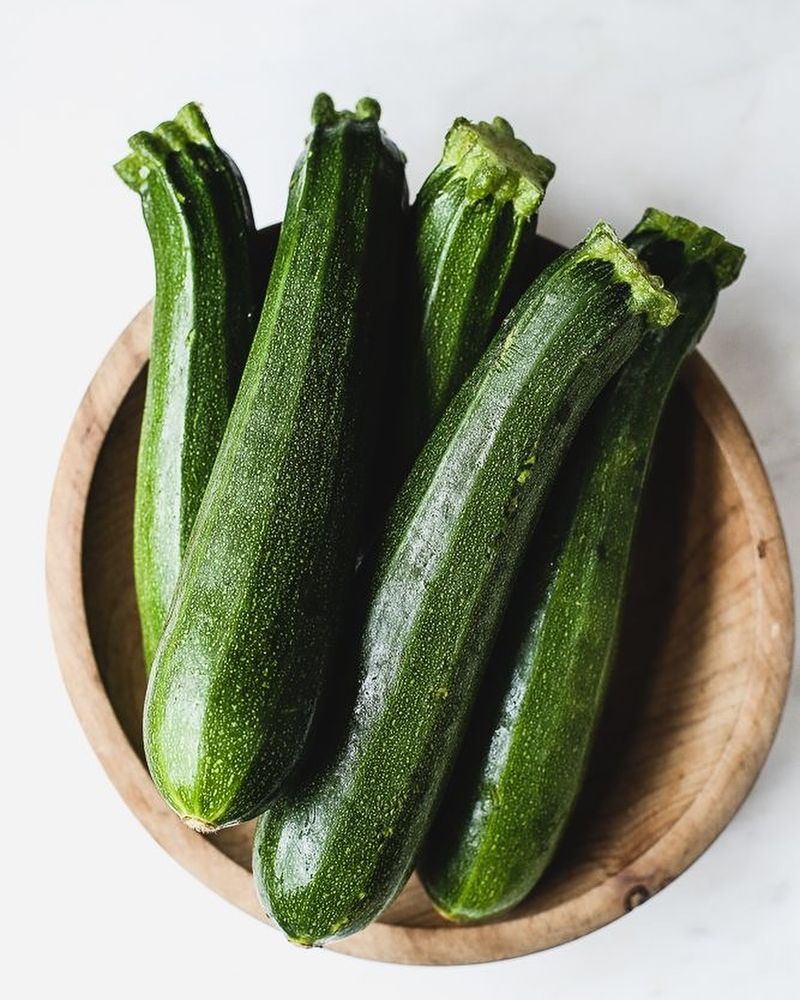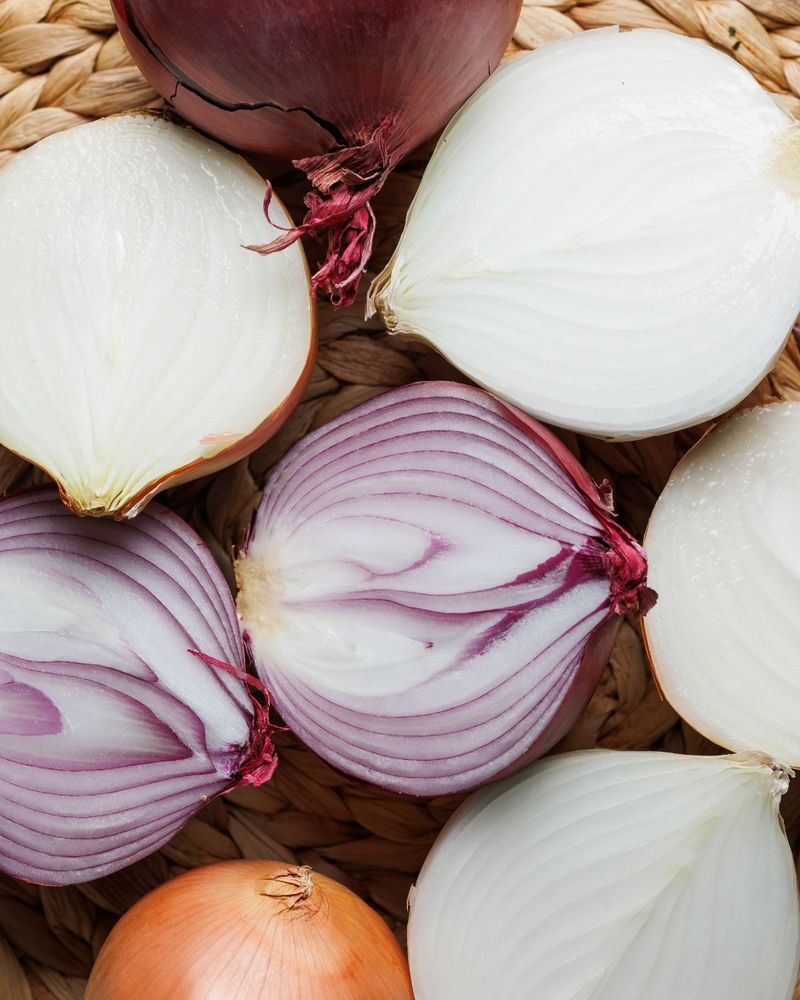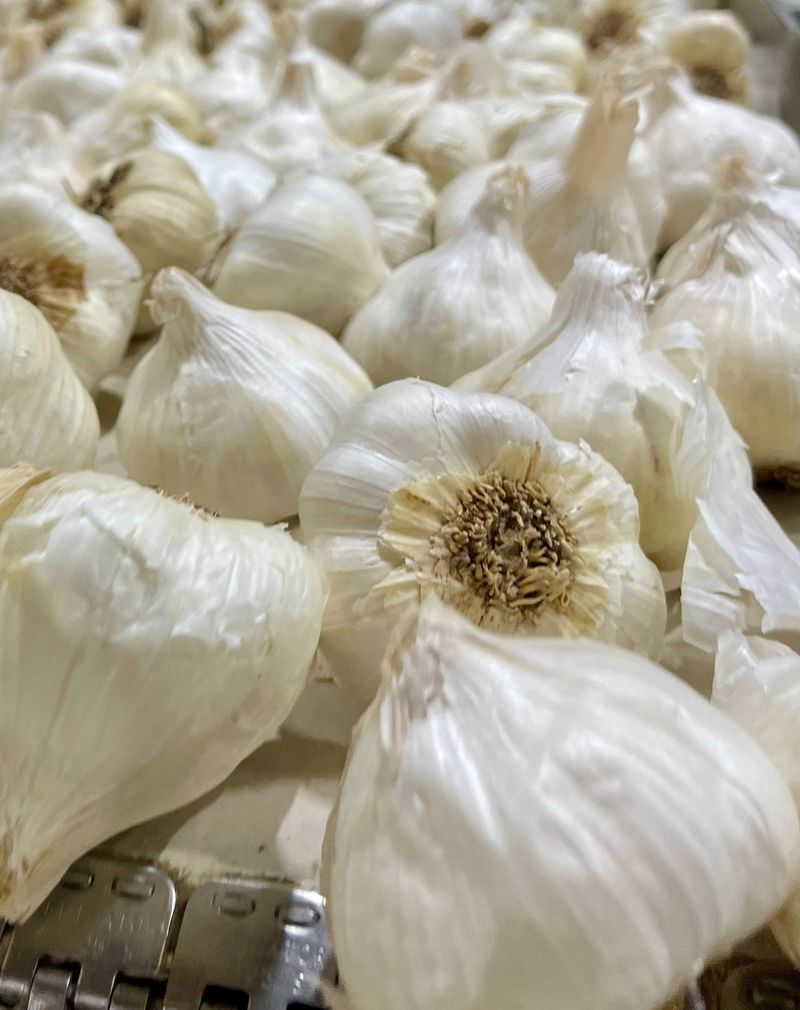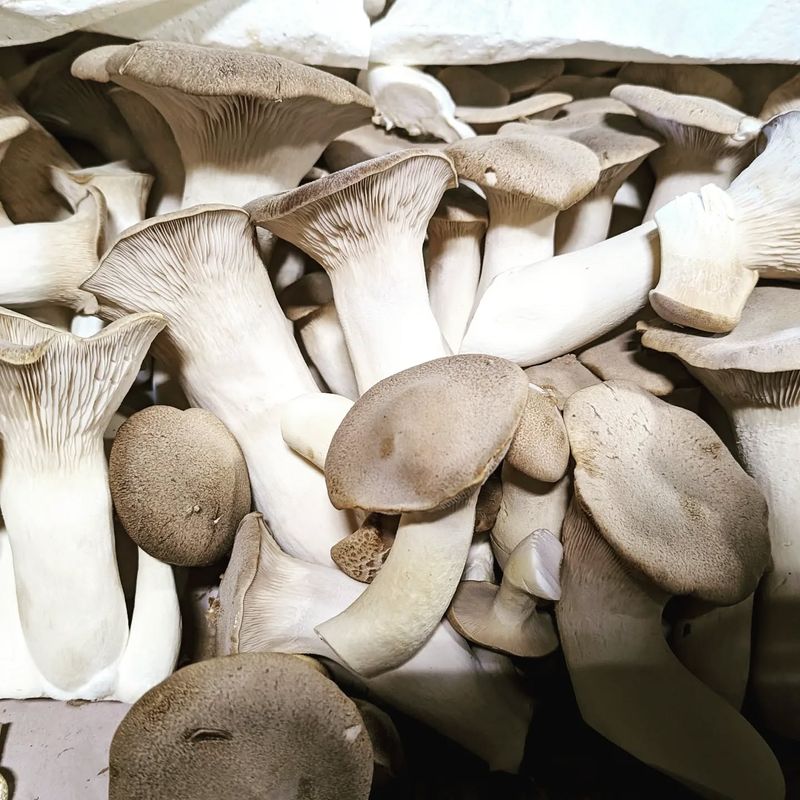📖 Table of Content:
Curious about sharing your veggies with your feline friend? While your cat may rule the house with a meat-loving heart, a few veggie treats can still make the cut. But tread carefully—some vegetables are purr-fectly safe in moderation, while others are ticking time bombs for your cat’s health.
Before you slide that plate of leftovers under the table, get the facts on which vegetables are safe, which are risky, and how to offer them without turning your cat’s stomach or risking a trip to the vet.
Spoiler alert: Not all that grows in your garden is cat-friendly. But with a little know-how, you can sprinkle some extra variety into your pet’s diet (and maybe even score a grateful purr in return).
1. Safe: Cucumber
Cats can safely enjoy small pieces of cucumber as an occasional treat. The high water content makes cucumbers a hydrating snack, especially during warmer months when your feline might need extra fluids.
Many cats are actually fascinated by cucumbers, though some may be startled by them when placed nearby unexpectedly. This vegetable contains vitamins K and C, which offer minor health benefits.
Keep portions tiny—just a few small pieces is plenty. Remove seeds and peel for easier digestion, and always introduce any new food gradually to watch for digestive upset.
2. Safe: Pumpkin
Plain, cooked pumpkin is a superfood for cats with digestive issues. Veterinarians often recommend it for both constipation and diarrhea because of its fiber content which helps regulate digestion.
The beta-carotene in pumpkin supports eye health and immune function. Always use plain pumpkin, not the sweetened pie filling which contains spices and sugar harmful to cats.
A teaspoon mixed into regular food is plenty for most cats. Canned plain pumpkin works well, but you can also cook and mash fresh pumpkin without any seasonings or additives.
3. Safe: Carrot
Steamed carrots make excellent treats for cats when cut into tiny, soft pieces. Rich in beta-carotene and antioxidants, they provide nutrients that support vision health, though cats need meat-based taurine for true eye health.
Some felines enjoy the slightly sweet taste and soft texture of cooked carrots. Raw carrots pose a choking hazard and are difficult for cats to digest, so always cook them until soft.
Avoid adding butter, salt, or seasonings when preparing carrots for your pet. A few small pieces once or twice a week is plenty, as too much can cause digestive upset due to the fiber content.
4. Safe: Zucchini
Mild-flavored zucchini rarely triggers food sensitivities in cats, making it a safe vegetable option. Steamed or boiled until soft, small zucchini pieces provide hydration and some nutritional benefits without upsetting sensitive stomachs.
The skin contains most of the nutrients but can be difficult to digest, so peeling is recommended for feline consumption. Zucchini contains potassium, manganese, and antioxidants that support overall health.
Some cats are attracted to the soft texture, while others might need convincing. Try mixing tiny amounts with their regular food rather than offering it alone for better acceptance.
5. Safe: Green Bean
Steamed green beans cut into small pieces make excellent low-calorie treats for cats, especially those needing to lose weight. Their fiber content creates a feeling of fullness while adding minimal calories to your pet’s diet.
Many veterinarians recommend replacing a small portion of regular food with green beans for overweight cats. The beans should be plain—no salt, butter, or seasonings—and cooked until soft enough to easily mash with a fork.
Fresh or frozen green beans work equally well, but avoid canned varieties that contain sodium. A tablespoon of chopped beans is plenty for most cats as an occasional treat.
6. Onion
Onions pose a serious threat to cats, potentially causing a condition called hemolytic anemia where red blood cells are destroyed faster than the body can replace them. All forms, raw, cooked, powdered, or even in small amounts, can be toxic.
Symptoms of onion poisoning include weakness, vomiting, breathlessness, and discolored urine. The compounds thiosulfate and disulfides damage feline red blood cells, and the effects can be cumulative over time.
Many prepared foods contain onion powder, so always check ingredients in any human food before sharing with your cat. This includes baby foods sometimes recommended for sick cats.
7. Garlic
Garlic belongs to the same family as onions and poses an even greater threat to cats—it’s estimated to be five times more toxic than onions per ounce. Even a small amount can damage red blood cells and cause dangerous anemia.
The toxic effects might not appear immediately but can develop over days following consumption. Cats with garlic toxicity may show lethargy, weakness, rapid breathing, pale gums, and collapse in severe cases.
Many human foods contain garlic powder or salt, making them unsafe for feline consumption. This includes many commercial broths, baby foods, and prepared meats that might otherwise seem cat-friendly.
8. Tomato
Ripe tomato fruit is technically safe for cats in small amounts, but the green parts—including stems, leaves, and unripe tomatoes—contain solanine, which is toxic to cats. The problem is that distinguishing between safe and unsafe parts creates unnecessary risk.
Tomato plants belong to the nightshade family, known for containing compounds that affect the nervous system. Symptoms of tomato plant poisoning include gastrointestinal upset, drowsiness, weakness, and confusion.
Commercial cat foods sometimes contain small amounts of ripe tomato, which is processed safely. However, home-grown or fresh tomatoes pose too much risk of accidental exposure to the toxic green parts.
9. Mushroom
While technically fungi rather than vegetables, mushrooms often appear in vegetable dishes and deserve mention for safety reasons. Store-bought mushrooms might not harm your cat in tiny amounts, but wild mushrooms can be deadly.
Cats exploring outdoors might encounter wild mushrooms, which can cause liver failure, kidney damage, or neurological problems, depending on the variety. Since identifying safe versus toxic mushrooms is challenging even for experts, the safest approach is to avoid all mushrooms.
Symptoms of mushroom poisoning vary widely but can include vomiting, diarrhea, yellowing of the skin/eyes, seizures, or coma. If you suspect your cat has consumed any mushroom, contact your veterinarian immediately.
